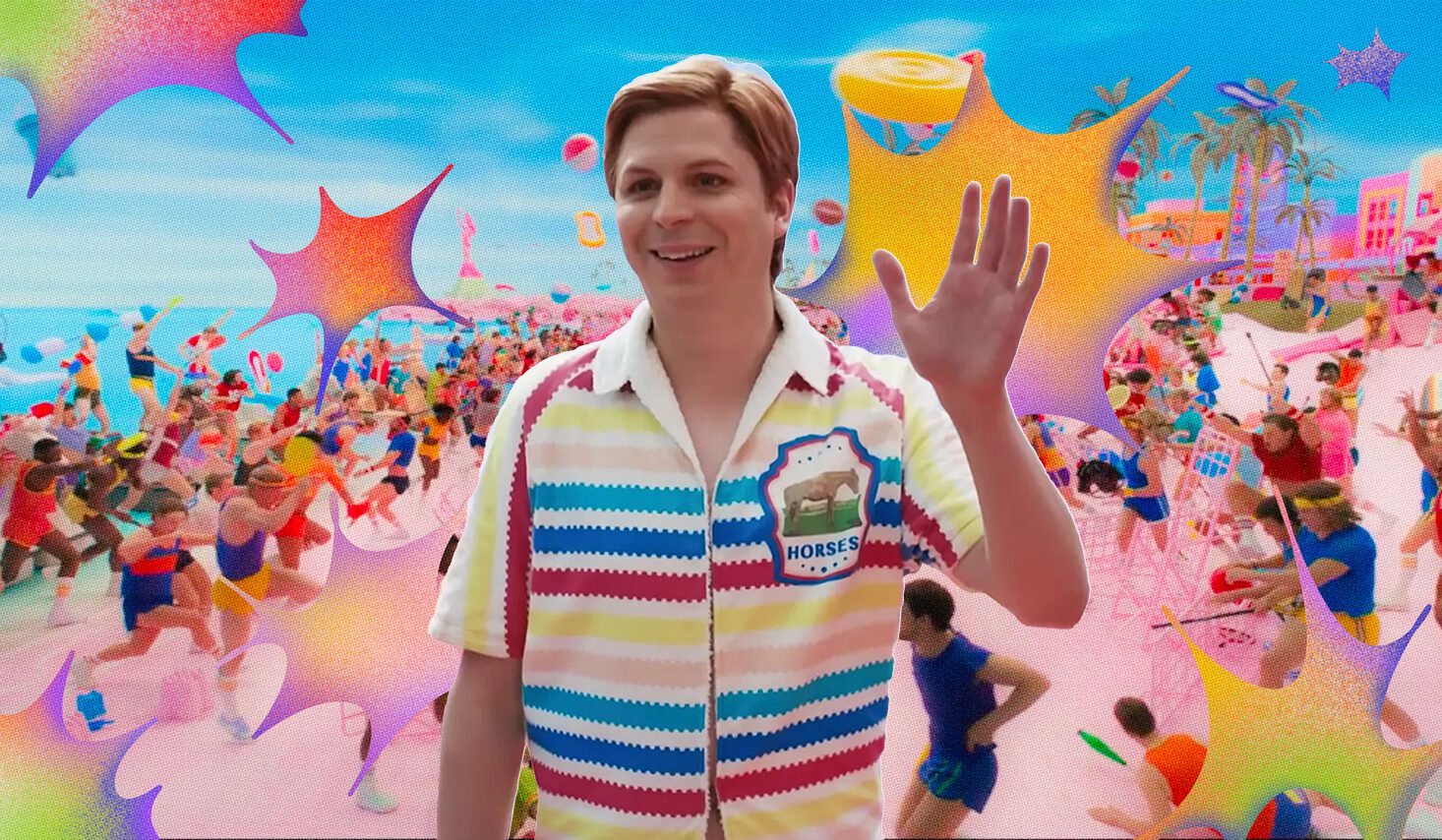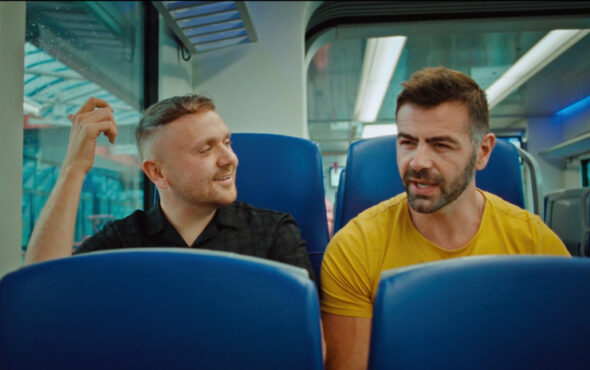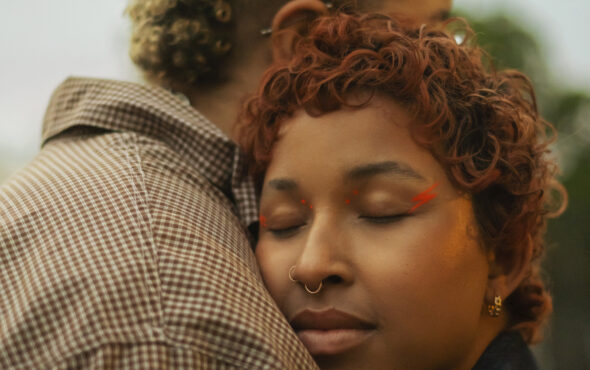
Greta Gerwig’s pink explosion has shattered the box office and broken records in just a week. For a film centring one of pop culture’s most iconic heterosexual couples, Barbie is peak camp. With bright colours and “beach offs”, it’s as delightful as the trailers promised. Barbie also follows in the footsteps of 2019’s Little Women, with Gerwig exploring how the patriarchy distorts the way we see, or remember, women.
Conservative commentators were quick to condemn her for ‘perpetuating an anti-men narrative’, as expected. However, Barbie’s engagement with patriarchy is infinitely more nuanced than these one-dimensional commentaries claim. Barbieland begins as a matriarchy: the Barbies own the dream houses, they’re the ones with the careers, and they run the government. The flipped presentation of gender is familiar and played for light comedy, but is immediately juxtaposed when Barbie enters the real world. While the Kens are ignored and treated as secondary in Barbieland, Barbie immediately senses danger upon entering the real world, and when Gosling’s Ken brings it to Barbieland, the Barbies are quickly brainwashed into submission.
Gerwig primarily focuses on the impact of patriarchy on women, but critics of her supposedly ‘anti-men’ narrative neglect her profound exploration of its effect on men. While Barbieland’s matriarchy enabled the Barbies to pursue unique, independent careers, the humorously named ‘Kendom’ leads to an exaggerated macho hive mind. Patriarchy still pits the Kens against each other, climaxing in a colourful, wonderfully choreographed fight scene.
The most nuanced depiction of patriarchy, however, comes with the depiction of queer, or queer-coded, men, especially Michael Cera’s Allan. The character isn’t invited to any of the Barbies’ ‘girls nights’ and finds himself subservient when the Kens take over, though the joke about him enjoying rubbing their feet suggests that this isn’t completely against his own will. Allan is an outsider that doesn’t quite fit into the communities formed around either the Barbies or the Kens, an experience resonant with many queer men. Allan is sidelined in both Barbieland’s matriarchy and Kendom’s patriarchy, not quite slotting into either. The experience isn’t explicitly queer, but is nevertheless one likely to resonate with many queer men.
Allan’s doll has an amusing, equally queer-coded, history – the doll was briefly introduced in 1964 as ‘Ken’s buddy’ and fit perfectly into all of Ken’s clothes. He was an accessory to an accessory – with gay undertones. Allan’s package even featured an illustration of an open-shirted Allan with a shirtless Ken standing behind him. Unfortunately, the marketing ploy of Allan sharing Ken’s clothes was unsuccessful, resulting in the doll being swiftly pulled from shelves. He saw a brief rerun as part of the ‘Happy Family’ collection, with the pregnant Midge, but Gerwig’s film doesn’t feature this iteration of the doll. He is a complete anomaly in the film. There’s a bunch of Barbies, and quite a few Kens. Allan is the only Allan, and fits in with neither.
When the Kens bring their patriarchy to Barbieland, Allan’s instinct, not having been brainwashed like the Barbies, is to flee with Gloria and Sasha. Though his loyalties lie with the Barbies, he doesn’t take action until motivated by Gloria, in a humorous sequence which sees Allan viciously attack Kens with a spade. Though primarily comedic, the sequence does make a poignant observation about the relationship between queer men and the patriarchy. Allan’s desperation to flee the system that oppresses him, rather than proactively participating in fighting it, is a form of compliance. In a world where his peers have been manipulated into subservience, he consciously chooses avoidance. However, when he participates in the fight against the Kens and in encouraging Stereotypical Barbie to take a stand, he proves to be a worthwhile ally. Gerwig isn’t afraid to demonstrate that queer men can be a part of the problem unless we actively support women in the battle against patriarchy.
Though Allan is the main channel through which queerness is explored in the film, there are other subtle allusions. During the scene with the discontinued dolls, we meet Earring Magic Ken. The flamboyantly-clothed Earring Magic Ken doll caused a media frenzy when he came out in 1993, as his design didn’t conform to ‘masculine expectations of dress sense’. Ken sported a mesh vest, pleather jacket and, of course, the iconic earring, before being pulled from shelves by the end of the year.
However, the doll was a success with gay men, who responded to the press controversy so effectively that it allegedly became the best-selling Ken doll in Mattel’s history. In short, Earring Magic Ken is a gay icon. In framing the discontinued dolls living with Kate McKinnon’s ‘Weird Barbie’ as outcasts, Gerwig spotlights other figures ostracised by both Barbieland’s matriarchy and Kendom’s patriarchy. There are various Barbies in the house, but Sugar Daddy Ken and Earring Magic Ken, the two Ken dolls designed with specifically queer undertones, are the only Kens.
However, the implied queerness extends to the conventional Kens. Casting Ncuti Gatwa as Artist Ken adds another dimension to the character. When the Barbies are liberated, Gatwa’s Ken is reunited with Emma Mackey’s Physicist Barbie, gleefully stating, “I just missed my friend Barbie.” While this reads on the surface as a playful nod to the actors both appearing in hit teen-drama Sex Education, it does seem poignant that the only Ken who explicitly points to ‘friendship’ with a Barbie is one played by an actor most famous for his role that breaks ‘gay-best-friend’ stereotypes.
The subtext of the relationship between queer man, pressured under the patriarchy into acting a certain way, and his ‘girl-best-friend’ is apparent. Unlike Allan and the outcast Kens, Gatwa’s Artist Ken benefits from Kendom’s patriarchy because he, on the surface, conforms. Gerwig is possibly alluding to a ‘closeted’ queer man, or a queer man who aligns with patriarchal expectations of gender conformity, in other words, a ‘straight-passing’ queer man. Until the removal of the patriarchy, Artist Ken slots perfectly into the collective of other Kens.
Perhaps Barbieland isn’t as queer as some fans may have hoped, but that’s not to say that the film doesn’t consider and spotlight queer people. Its incredibly queer cast, including icons such as Hari Nef, Alexandra Shipp, Scott Evans and Kate McKinnon, certainly demonstrates that queer aspects were considered during the film’s production. Fortunately, the film’s centrepoint, its exploration of patriarchy, does not neglect the role of queer men in both its upholding and its opposition. We may be victims, but we are also compliant, and Gerwig isn’t afraid to tell us.


